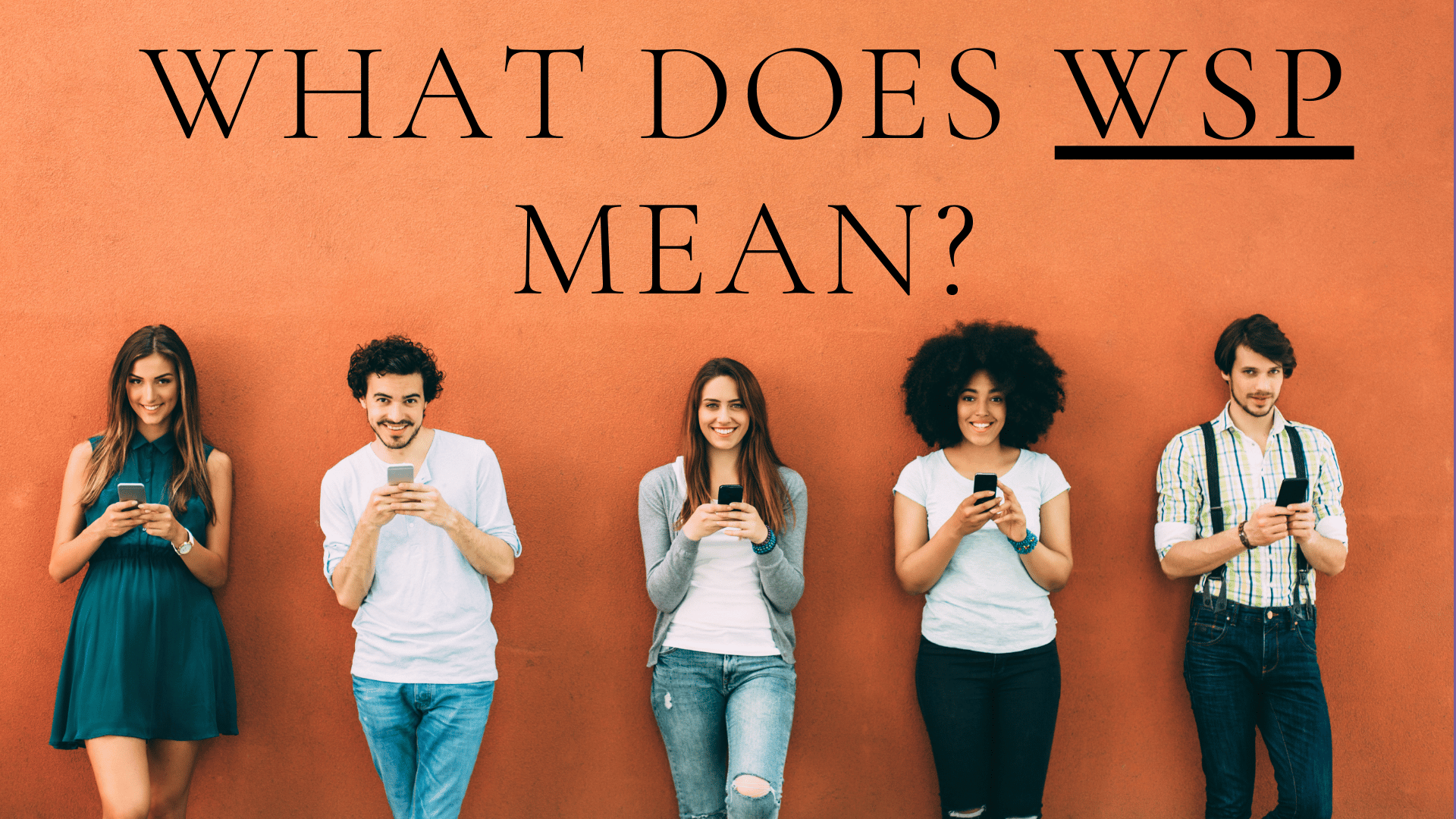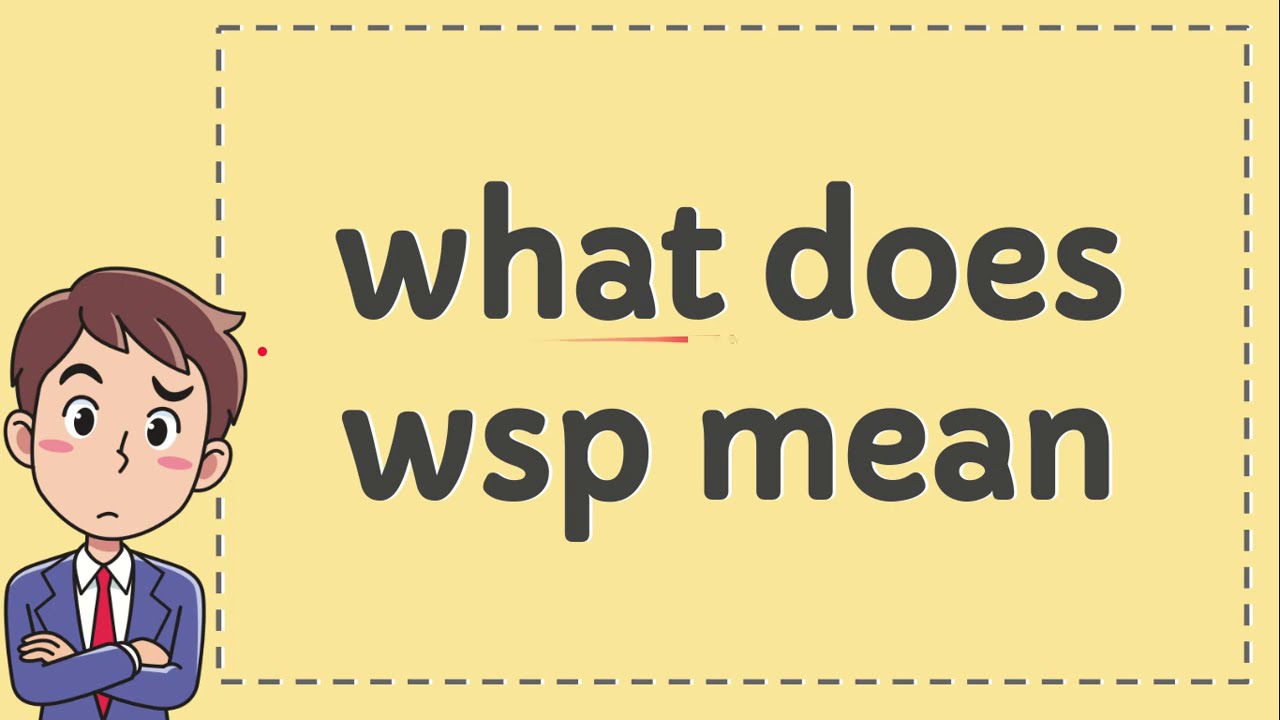Meaning behind WSP Text, In the digital age, many people recognize shorthand as an important part of the texting culture. One of the most often used text phrases is “WSP.” Even if it sounds strange to many, people find it the best way to initiate a conversation or know whether a person can attend anytime. Whether social media, messaging apps, or online gaming platforms, you’ll find “WSP” if you stay active online. Therefore, what does “WSP” mean, and how did this term become so widely applied in modern language? Let’s talk about it here: origin, daily use, and where it stands in the larger scheme of Internet jargon.
What does WSP mean?
“WSP” is “What’s Up?” It is an amiable, casual phrase to inquire, for instance, how the other person is doing or what’s happening in their life lately. As most acronyms do, “WSP” developed as a more efficient way of expression. “What is going on?” Instead of writing it down, “WSP” is said out loud because it’s short and straight. That means especially much to the younger generation who loves the idea of speed and convenience when it comes to messaging online Meaning behind WSP Text.
WSP” in texting can be an icebreaker and a way to get the conversation started. In some contexts, it may also be an actual question such as “How are you?”, “What do you have planned for today?”, or “What’s next?” for the individual.
Origin and development of “WSP.”.
The creation of “WSP” traces back to the invention of internet slang and text abbreviations around the early 2000’s. As soon as cell phones and texting were invented, people started seeking ways to shorten sentences that they typed because it was taking too much time and too much typing. Acronyms and shorthands like “LOL,” “BRB,” and “WYD” emerged, so “WSP” was just another word in the evolving language.
Initially, what is up was inputted as? Or “sup?” In instant messaging, and early online communities, though. However, as the interfaces for text messaging evolved and people became more urgent with how they wanted to communicate “WSP” became increasingly popular. Its concise, brief format is ideal for the pace of modern digital communication.
Examples of “WSP” in everyday chatter
Casual check-in
Probably the most frequently used “WSP” is to catch up with someone-just that. It’s a low-stress way of asking about someone’s day without really having to answer you much. Here’s an example Meaning behind WSP Text.
Friend A: “Hey, WSP?”
Friend B: “Not much, just chillin’. You?”
It’s a pretty common exchange between friends and acquaintances who aren’t necessarily that close but do want to keep in touch without really getting too deep.
Starting a conversation
“WSP” can also be a good word to start a conversation with. If you need to start a communication with someone, but don’t know how to begin, try sending “WSP-it is polite and leaves the topic in suspension for the recipient to respond whatever they please or respond informally. is
When someone texts you something like this:
Person A: “WSP?”
Person B: “Hey! Just got home. How are you?”
Starting up projects
WSP” may also serve as a fast way of getting a feel for people’s interest or availability when friends or groups are trying to plan. For example:
Friend A: “WSP? Want to watch a movie later?”
Friend B: “Sounds good. What time?”
Here, “WSP” is not merely a casual greeting; It functions as an informal prompt to take some action or provide some response about plans that are being made.
Applications of “WSP” in particular contexts.
While “WSP” usually means “What’s up?” Its exact meaning may change based on context, tone, and relationship dynamics. Here are some ways that “WSP” can be interpreted in different situations:
Friendly greeting
Meaning behind WSP Text, Amongst friends, “WSP” is usually always a friendly greeting. It sets up a relaxed atmosphere which implies an interest without overstepping the other person’s boundaries.
At times, “WSP” can be a way of showing interest about what somebody has been up to lately or what he or she has on his or her mind. If after a long time when people have stopped talking and no one has a thing to say, someone says “WSP,” there is a deep intention of reconnecting to know about other recent things that the other person has gone through.
For help or support
Some situations require the utilization of “WSP” as a concealed calling for help. For example, in a point where an individual is under stress, a “WSP” from a close friend can give him/her non-confrontational ways of checking up on him/her without forcing him/her to open up on what he/she is going through if he/she isn’t ready.

Display of Interest
If utilized in the beginning of texting or some form of online dating, “WSP” may grow to be a sign of interest for romance or friendship. It is much more common on dating apps where a simple “WSP?” Can open up a doorway to a longer conversation or allow one person to test the waters.
How “WSP” became so popular?
“Beep” fits perfectly with the modern style of communication:
Short is sweet in texting, and “WSP” is as short as it gets to meaning.
Nonobtrusive tone: It’s light-hearted and stress-free, which means that it is comfortable to use in a number of social settings.
Orientation: “What’s going on?” is a rather well-known greeting, so the use of “WSP” makes sense and comes through easily to most ears.
Flexibility: “WSP” can use in friendly as well as romantic contexts, thus giving a versatility that many other greetings are not able to do.
Variations and similar terms to “WSP”.
Although “WSP” is widely use, it is not a phrase of its kind. Some of the similar greeting or check-in messages include:
WYD: Short for “What are you doing?”. It asks about the activities that someone is currently doing.
HBU: That is, “How about you?” Follow-up question for a conversation.
SUP: What’s up? The age-old simple rendition of it – Often abbreviated as WSP in related contexts.
HMU: Abbreviation for “Hit Me Up”- An invitation to start a plan or make some moves.
All these phrases essentially have the same function but have varied nuances to them. For instance, “WYD” is much more activity specific than “SUP,” which is as if “WSP” but somehow feels more antiquated.
Acronyms such as “WSP” in digital communication
In a world where digital communication is instant and omnipresent, acronyms such as “WSP” really come in handy to keep everyone updated within no time, adapt according to the demand of multitasking for living, and communicate on-the-move. To most, they provide an informal touch that helps build relationships easily in informal settings.
Writing in very informal language allows one to stay in touch and check in but does not oblige someone to large exchanges. This mode of communication parallels the rise of mobile technology, with each new messaging app fostering the development of acronyms as a form of shorthand.
Is “WSP” here to stay?
Like most Internet abbreviations, “WSP” may evolve over time to reflect changes in dialects; however, its simplicity and flexibility also suggest that it will last. As with “LOL” and “BRB,” “WSP” is here for the years to come, mainly because people always want a shorter and more accessible way of communicating.
New generations will probably come up with yet more abbreviated or innovative abbreviations; for now, however, “WSP” is the champion of an amiable hello or a cursory catch up. Whether it will be supersed something even more streamline only time will tell but it’ll probably around in some form as part of our digital lexicon Meaning behind WSP Text.
Read More: Matching Photo Profiles: Have Some Fun Funnelling your way into the realm of matching your pictures
The End
Meaning behind WSP Text is more than just an abbreviation-it is the representation of frenetic, performance-oriented culture of the digital age. “What’s going on?” Because it gives way to a quick expression of This allows users to keep plugged in without giving up too much time or energy. As text messaging and social media move forward shaping the linguistics of society, it is likely that acronyms like “WSP” will continue to thrive, developing along with our communication needs. Whether you are internet savvy, very fond of chatting online, or new to all the internet slang, knowing “WSP” or similar terms makes it easy to engage in online communication.













